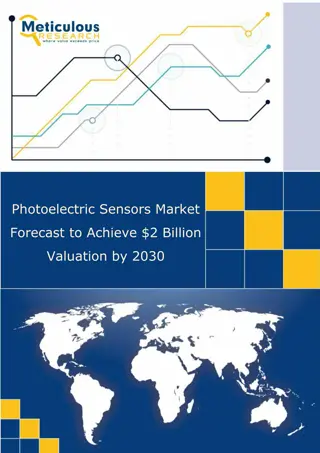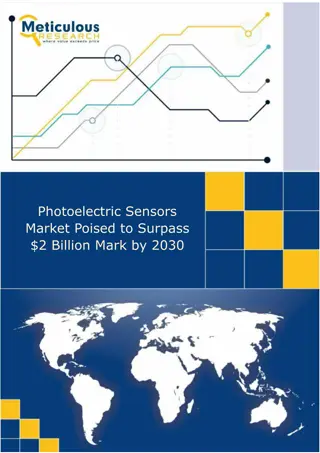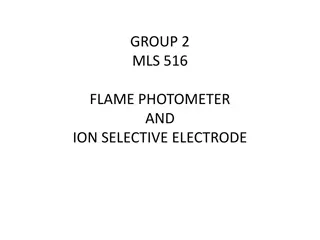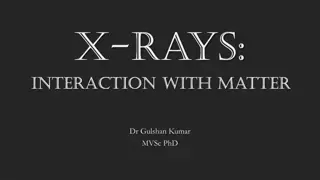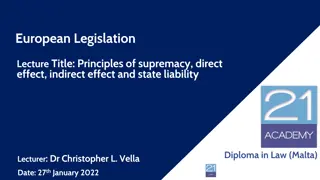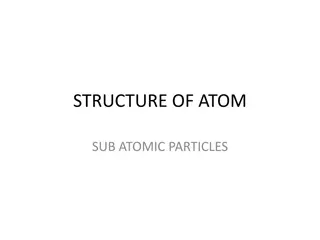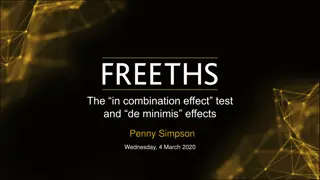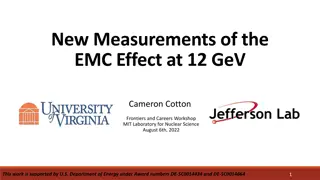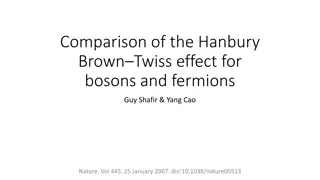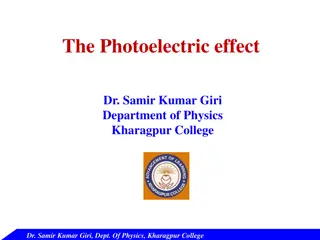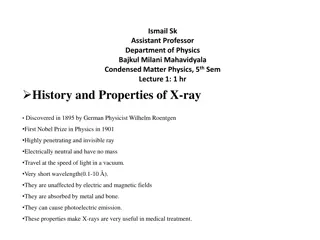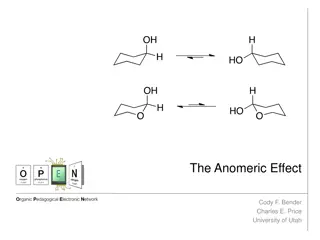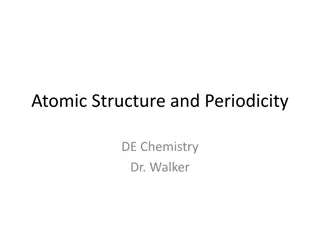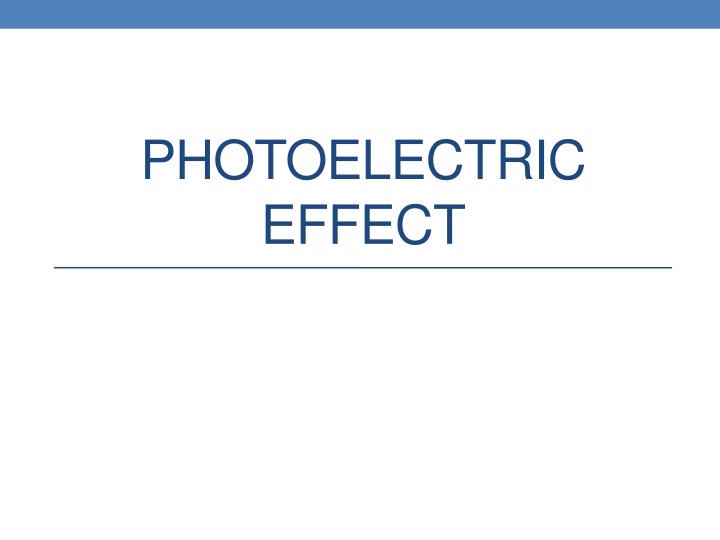
Photoelectric Effect - Role of Photons and Work Function
Explore the fascinating phenomenon of the photoelectric effect, from Heinrich Hertz's experiment to Max Planck's quantum theory. Learn about the crucial role of photons and the concept of work function in this fundamental concept of modern physics.
Uploaded on | 1 Views
Download Presentation

Please find below an Image/Link to download the presentation.
The content on the website is provided AS IS for your information and personal use only. It may not be sold, licensed, or shared on other websites without obtaining consent from the author. If you encounter any issues during the download, it is possible that the publisher has removed the file from their server.
You are allowed to download the files provided on this website for personal or commercial use, subject to the condition that they are used lawfully. All files are the property of their respective owners.
The content on the website is provided AS IS for your information and personal use only. It may not be sold, licensed, or shared on other websites without obtaining consent from the author.
E N D
Presentation Transcript
PHOTOELECTRIC EFFECT
The experiment of Heinrich Hertz In the year 1887 Through glass a weak spark, through quartz a stronger spark Conclusion: When illuminated with UV light, the electrons escape from the surface of the metal more easily
Assumptions from classical (wave) theory 1) Number of ejected electrons is proportional to the intensity of the incident light 2) Whether electrons are ejected is dependent on the intensity of light 3) The maximum kinetic energy of the electrons depends on the intensity of the light 4) At low intensities, some time is needed in order to eject electrons
Testing for photoelectic effect We measure the volt-ampere characteristics
Conclusions about the photoelectric effect 1) The number of ejected electrons is proportional to the intensity of the incident light 2) Whether electrons are ejected is dependent on the freq uency of the light 3) The maximum kinetic energy of the electrons depends o n the frequency of the light 4) At low intensities, electrons are ejected immediately
...from previous lessons Energy is radiated in quanta. ? = ? ? Max Planck (185 8-1947)
Explanation Energy is radiated and absorbed in quanta PHOTONS Albert Einstein (1879-1955)
Photons Light quanta Always moving at the speed of light Energy ? = ? Simultaneously a wave and a particle
What is the role of photons in the photoelectric effect?
Work function New physical quantity! Energy required for the electron to leave the metal Property of the metal Notation:
Einstein's equation for the photoelectric effect ? = ? +??2 2 The energy of the photon (hf) is used to overcome the work function (A), and the exess is turned into kinetic energy of the electron. Conservation of energy!!!
Conclusions about the photoelectric effect 1) The number of ejected electrons is proportional to the in tensity of the incident light 2) Whether electrons are ejected is dependent on the freq uency of the light 3) The maximum kinetic energy of the electrons depends o n the frequency of the light 4) At low intensities, electrons are ejected immediately
The number of ejected electrons is proportional to the intensity of the incident light Intensity is proportional to the number of photons The more photons, the more ejected electrons Higher intensity means a larger number of ejected electrons
The maximum kinetic energy of the electrons depends on the frequency of the light ????=? ?? = ? ? ???? =? ????= ???? ? There is a maximum wavelength for which electrons are ejected
Whether electrons are ejected is dependent on the frequency of the light ? = ? +??2 2 ? = ? + ?? ??= ? ? For higher frequency the electrons have a higher kinetic energy
At low intensities, electrons are ejected immediately Photoelectric effect as a collision between two particles The electron absorbs the energy in a very short time (almost immediately) No delay at low intensity
Main ideas Light is transmitted as photons Photons are light quanta A photon is both a wave and a particle The photoelectric effect is explained by the existence of photons This lead to significant developements in science and technology Thank you, Einstein!




